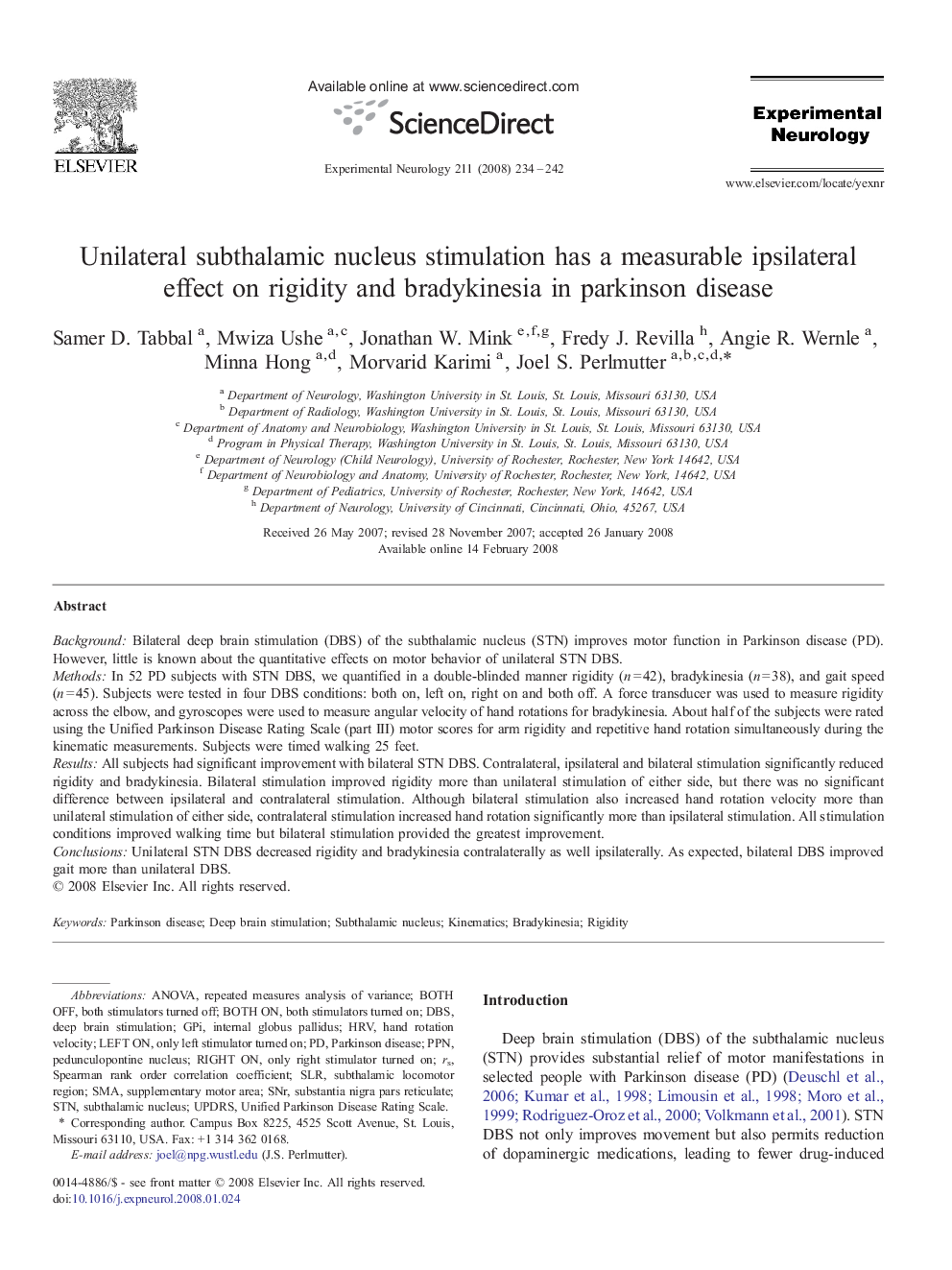| Article ID | Journal | Published Year | Pages | File Type |
|---|---|---|---|---|
| 3056673 | Experimental Neurology | 2008 | 9 Pages |
BackgroundBilateral deep brain stimulation (DBS) of the subthalamic nucleus (STN) improves motor function in Parkinson disease (PD). However, little is known about the quantitative effects on motor behavior of unilateral STN DBS.MethodsIn 52 PD subjects with STN DBS, we quantified in a double-blinded manner rigidity (n = 42), bradykinesia (n = 38), and gait speed (n = 45). Subjects were tested in four DBS conditions: both on, left on, right on and both off. A force transducer was used to measure rigidity across the elbow, and gyroscopes were used to measure angular velocity of hand rotations for bradykinesia. About half of the subjects were rated using the Unified Parkinson Disease Rating Scale (part III) motor scores for arm rigidity and repetitive hand rotation simultaneously during the kinematic measurements. Subjects were timed walking 25 feet.ResultsAll subjects had significant improvement with bilateral STN DBS. Contralateral, ipsilateral and bilateral stimulation significantly reduced rigidity and bradykinesia. Bilateral stimulation improved rigidity more than unilateral stimulation of either side, but there was no significant difference between ipsilateral and contralateral stimulation. Although bilateral stimulation also increased hand rotation velocity more than unilateral stimulation of either side, contralateral stimulation increased hand rotation significantly more than ipsilateral stimulation. All stimulation conditions improved walking time but bilateral stimulation provided the greatest improvement.ConclusionsUnilateral STN DBS decreased rigidity and bradykinesia contralaterally as well ipsilaterally. As expected, bilateral DBS improved gait more than unilateral DBS.
